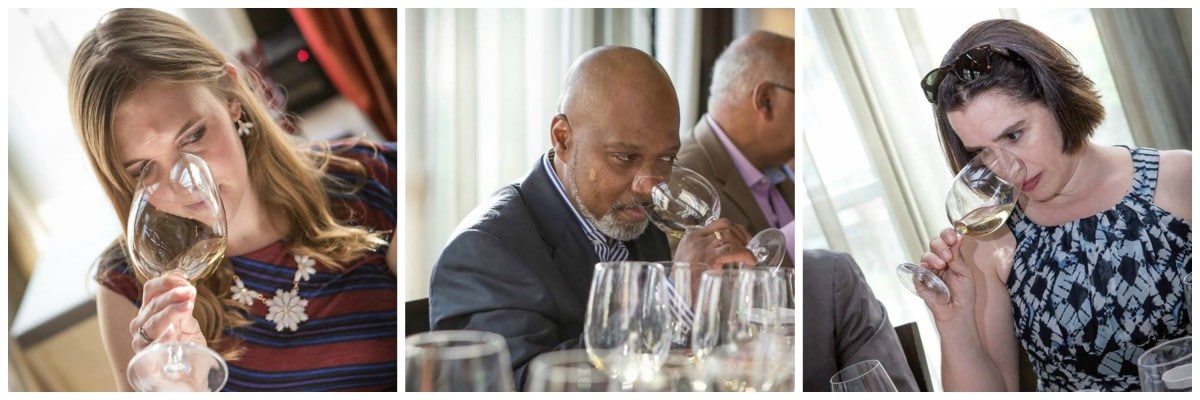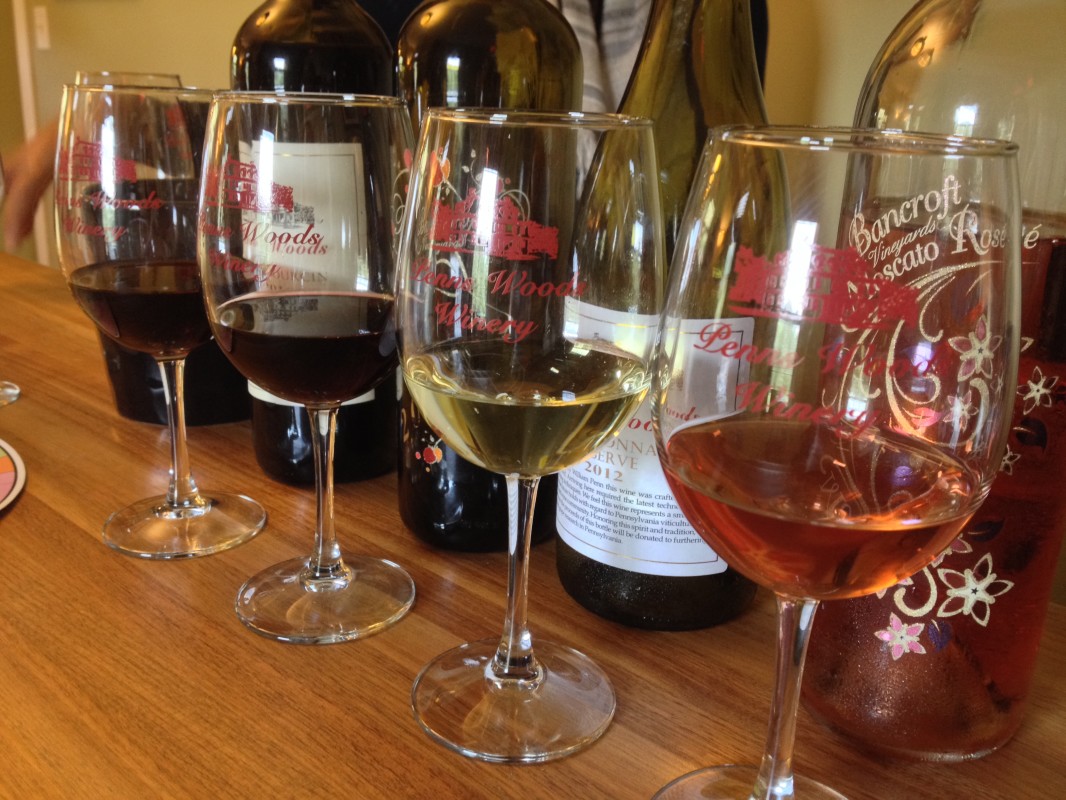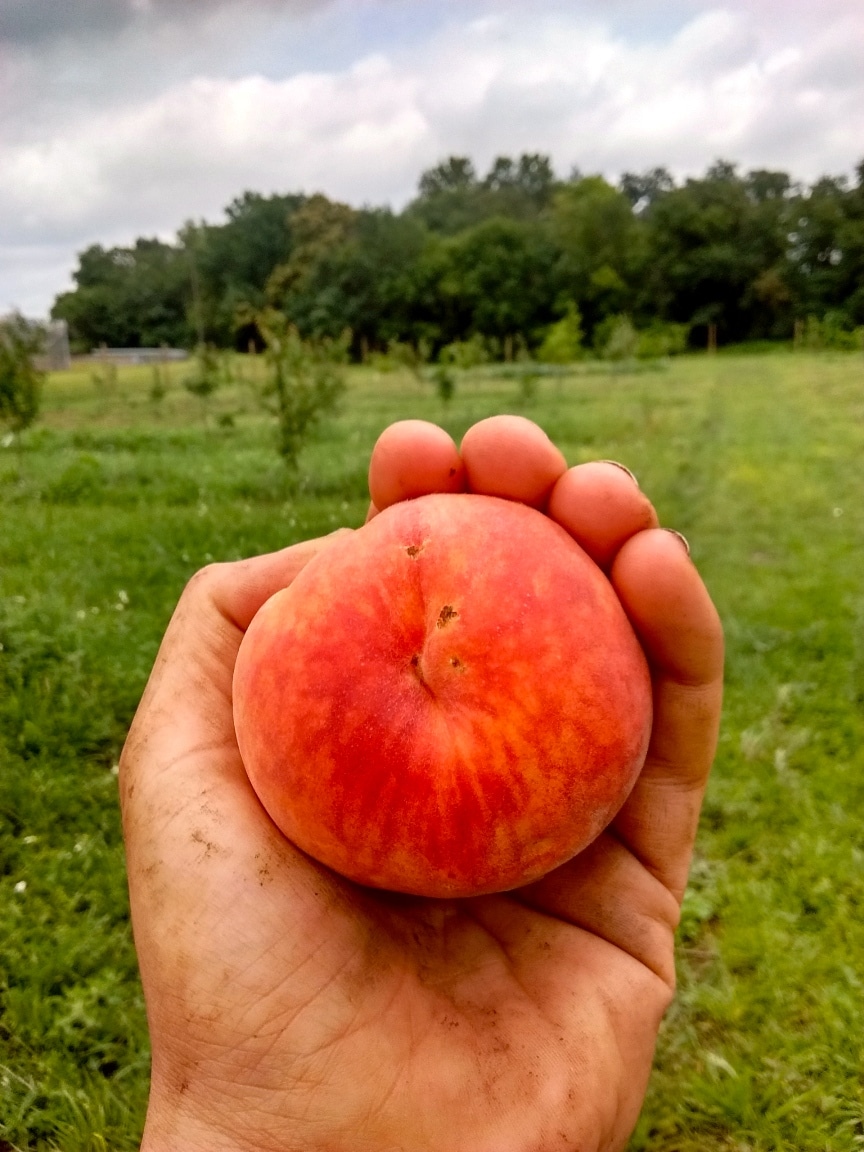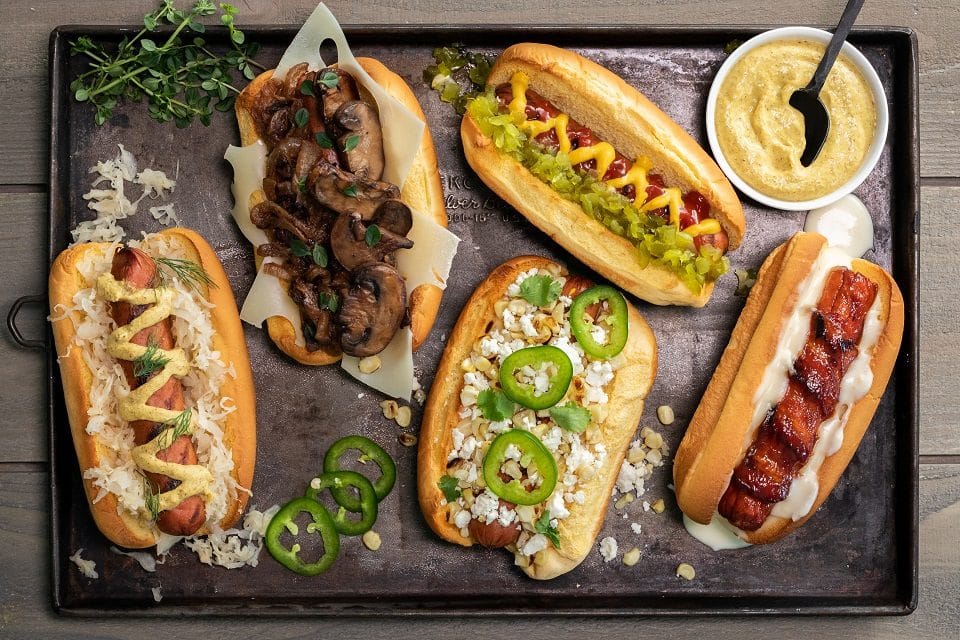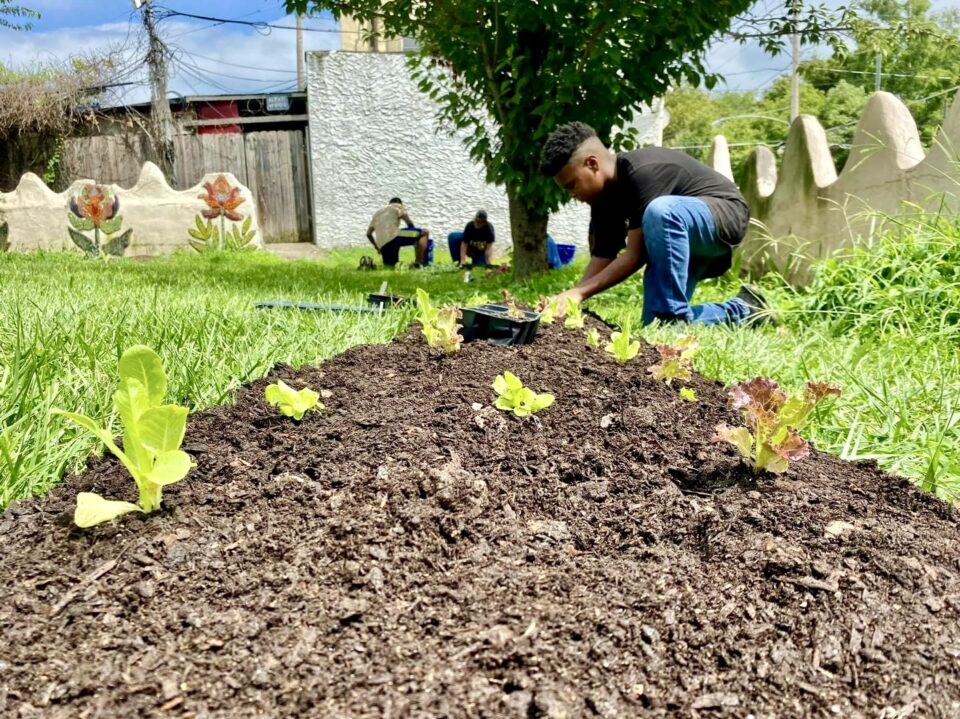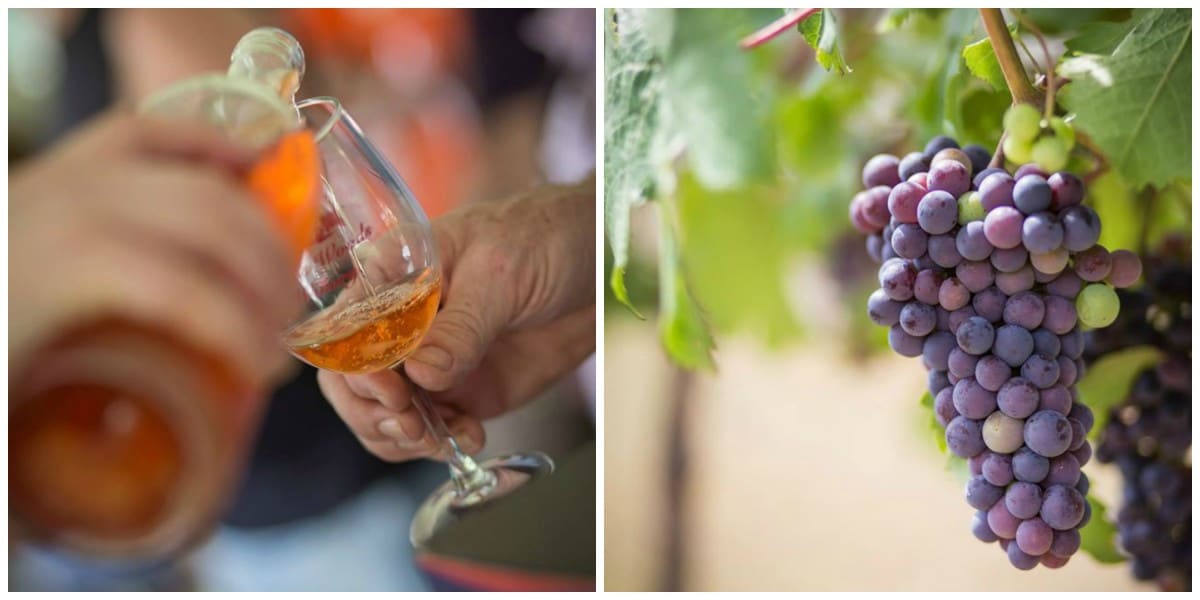
If you want to enjoy wine more, then start exercising your nose.
Sure, you’ll need to sip and sample, but first you’ll need to train your nose to recognize a myriad of aromas. Other senses have their part, too: your eyes can be trained to detect a spectrum of colors and your taste can go way beyond sweet and savory.
This is delicious multisensory work. It’s something we all can hone every day just by being aware of everything—yes, everything—that’s around us. Wine is a live product that changes from the day it’s born to when it’s put into the bottle to when you open it, and right up until the last drop.
 “Wines are like people: each one is different,” explained Ottavio Ruggieri, division sales manager for WinesU, the import company winemaker Gino Razzi owns along with Penns Woods Winery. “Each has its own pH level, and that produces the flavors you sense. When you exercise your nose, you develop the ability to recognize flavors.”
“Wines are like people: each one is different,” explained Ottavio Ruggieri, division sales manager for WinesU, the import company winemaker Gino Razzi owns along with Penns Woods Winery. “Each has its own pH level, and that produces the flavors you sense. When you exercise your nose, you develop the ability to recognize flavors.”
Carley Razzi Mack, Penns Woods’ marketing manager, says the best advice she ever got was to observe and smell everything around her: food, flowers, spices, fresh cut grass, fall leaves, rain, new products like leather—everything.
“You already have so much knowledge about flavors and aromas, but you can develop more,” she said. “You’re memorizing and classifying them in your mind and memory. When you find one in the wine you’re tasting, you’ll recognize it immediately.”
See, Smell, Sip
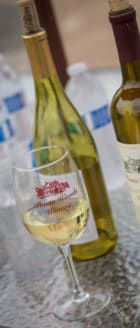 The eyes have it and are the first point in tasting wine. The whole process is very similar to enjoying a fine meal: you see the gorgeous presentation, you note the many mouthwatering smells coming from the plate and then you taste. With wine, we see, smell and then sip.
The eyes have it and are the first point in tasting wine. The whole process is very similar to enjoying a fine meal: you see the gorgeous presentation, you note the many mouthwatering smells coming from the plate and then you taste. With wine, we see, smell and then sip.
To swirl or not to swirl? Ottavio says that’s a great question. Swirling is only necessary when you’re doing a tasting. It aerates the wine, bringing in more oxygen, so the wine can express as much aroma as possible. After you swirl, then you breathe deeply, eyes closed, just from one nostril.
“In the bottle, wine was tightly enclosed in a specific dimension,” Ottavio added. “When you open the bottle, you wake it up. It needs to ‘stretch’ in the glass, like a cat stretches after a nap. Then, it can really perform.”
Take a Long Look
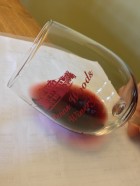 Seeing the wine’s color sets the stage, but don’t just hold the glass up to the light. Take a look at the “nail.” At a professional testing, the tables are either white or covered with a white tablecloth so you can see the wine’s true color. Just carefully tilt the glass so it’s almost parallel to the white surface and until the shape of the wine in the sideways glass resembles a fingernail. Now you can see the intensity of the color, which is especially important with reds.
Seeing the wine’s color sets the stage, but don’t just hold the glass up to the light. Take a look at the “nail.” At a professional testing, the tables are either white or covered with a white tablecloth so you can see the wine’s true color. Just carefully tilt the glass so it’s almost parallel to the white surface and until the shape of the wine in the sideways glass resembles a fingernail. Now you can see the intensity of the color, which is especially important with reds.
“Based on the type of wine you can have a ruby red, an intense deep red or even orange-brown,” Ottavio explained. “Orange-brown often means it’s oxidized—it could be dead. Or, it could be the most prestigious Italian wine like a Barolo or Barbaresco. With American wines, it’s a caution.”
Take a Slow Smell
For our tasting lesson, Carley had samples of some of the many notes found in good wines, from lemon, strawberries and rose petals to peppercorns, nuts and chocolate—even cinnamon. Each was in a covered wine glass. Ottavio demonstrated the proper way to smell them, which is the same way to take that first whiff of wine. Close your eyes, and waft the glass toward just one nostril. It’s not a big gasp from the glass, but a gentle, deep inhale that brings the scent into your nose so it can access your memory.
“When you close your eyes and smell with one nostril, you’re shutting down the other doors of your senses,” Ottavio noted. “It’s like how a blind person tends to be more attuned one or more other senses. With wine tasting, closing the eyes helps access those memories.”
Our memories are strong, and we’ve developed opinions on smells and flavors from every time we’ve experienced them. Ottavio counsels never to prejudge a wine, but to always give it a chance, especially if you’ve never had it. Don’t write off an entire style (sweet or dry, for example) until you try it.
“When you smell something in the wine, your palate wants to taste something similar,” he said. “If there’s a disconnect between the nose and the palate, then there isn’t harmony. The wine may not be ready. But, how do you know if you don’t try?”
Take a Small Sip
Time to taste? Finally, yes! And to really taste the wine, you’re going to sip and spit. Obviously not at a restaurant, but at a winery, at home or at a tasting, there is a proper way to detect all the nuances wine has to offer. Just be glad you don’t have to prepare as Ottavio does for a professional testing.
“To prepare my palate, I get up at 5 or 5:30 a.m.,” he said. “I have a glass of water, and I don’t brush my teeth. Then five or six hours later, I’m ready to go. To whet my palate, I rinse my mouth with wine to wake up the taste buds, and spit it out. Then I sip, a very small sip. I roll the wine at the front of my mouth, using the tongue, while pulling in some air. I only swallow the tiniest bit, and spit the rest out. This gives me the first impact of the wine’s personality. I want to go inside the wine, touch its soul and then see what it has to offer on the back.”
Wow. Just wow. That’s an amazing commitment and is one of the reasons why wines imported by WinesU are among the best you will find. With Ottavio and his professional colleagues doing much of the tasting, you know it’s going to be amazing.
At this point, I’d be lying if I didn’t admit that I was a bit intimidated to offer my comments on the Penns Woods Wines we were about to sample. Ottavio was quick to put my mind at ease.
“There are no rules when describing wine,” he assured me. “You describe it the best way possible, based on your own experiences. See, smell and sip, and allow your memories tell you.”
Putting the Lessons to the Test
Ottavio, Carley and I tasted the following, and agreed on these tasting notes:
Chambourcin 2010
See: A deep garnet nail.
Smell: Pomegranate, carob and a bit of sage.
Sip: Earthy, spicy pepper and chocolate on the finish. Medium-bodied and complex.
Bancroft Merlot 2011
See: A ruby nail, very intense.
Smell: Chocolate, berry and a hint of pepper.
Sip: Cherry, chocolate and a bit of rose petal on the finish. A big wine that’s not overpowering.
Chardonnay Reserve 2012
See: A green-gold nail, reminiscent of young grass.
Smell: Citrus, vanilla and a hint of nuttiness.
Sip: Notes of green apple, nut and a buttery finish. The acidity is crisp and refreshing.
Bancroft Moscato Rose NV
See: A deep strawberry nail.
Smell: Strawberry, peach, rose and a touch of grapefruit.
Sip: White peach, lychee and honey on the finish. Refreshing and just-right sweet.
Help at Home
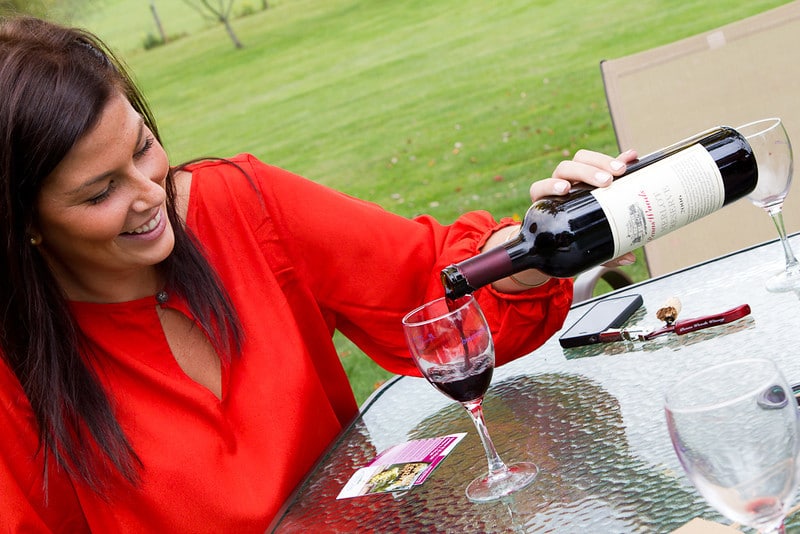
Although it would be delightful to have Ottavio and Carley on speed dial, that’s not likely to happen. But there are plenty of ways you can exercise your eyes, nose and taste buds and expand your wine knowledge.
“It’s practice—and what ‘tough’ practice it is,” Carley teased. “You can take classes, buy wine aroma kits and download a wine aroma wheel. There is no wrong answer. Just remember to smell as much as you can to grow your memory banks, and then get to tasting.”
So, what are you waiting for? Hurry on over to Penns Woods Winery at 124 Beaver Valley Road in Chadds Ford and let the expert tasting room staff guide you.
- Pours of Penns Woods' Wine, Ottavio Ruggieri & Carley Razzi photos: Nina Malone
- Remaining Photography: Nina Lea Photography
